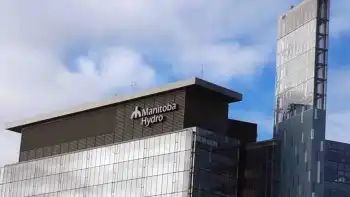Putting a light on bulbs
By Knoxville News Sentinel
High Voltage Maintenance Training Online
Our customized live online or in‑person group training can be delivered to your staff at your location.

- Live Online
- 12 hours Instructor-led
- Group Training Available
Sometimes the best part of the day is coming home after a hard day's work, retiring to the den, getting comfortable in your favorite chair and curling up with your favorite book or newspaper.
But, alas, on this particular evening, the bulb in your lamp has gone out. A simple matter to replace it, right?
Wrong.
Light bulbs are now available in a variety of types, and they are not all created equal. Let's take the time to learn more about the science behind what makes the different light bulbs work and consider which one is the most cost-efficient to operate.
But first we need to consider something much more basic: the atom.
There are three major types of light bulbs available today: incandescent, halogen and fluorescent. While there are differences in the mechanics and economics of these bulbs, they all operate on the same basic principle: exciting atoms.
The most basic and fundamental model of the atom describes a positively charged nucleus of protons and neutrons surrounded by negatively charged electrons that travel in distinct orbital shells around the nucleus.
Conceptually, it is similar to a model of the planets of the solar system orbiting the sun, but electrostatic forces, not gravity, are at work in the realm of the atom.
While modern physics now describes a very different and exotic subatomic world, this basic model will serve our purposes.
Electrons with greater energy "orbit" farther from the nucleus of an atom. When atoms gain or lose energy, it is often expressed by the movement of electrons from one orbital shell to another.
When an atom gains energy, an electron may be temporarily bumped to a higher orbit. It then almost immediately returns to its original shell, releasing energy in the form of a photon - light.
This is the basic mechanism behind all light sources. What differs is how and to what extreme the electrons are excited.
In the 19th century, Sir Joseph Swan (1878) and Thomas Edison (1879) were independently able to take the relatively new science of electricity and use it to generate artificial light. Within 25 years, millions of people around the world had installed electric lighting.
Surprisingly, its basic design has not changed drastically during the past 130 years.
A light bulb has two metal contacts, called the foot contact and the thread-screw contact, at its base, connecting the bulb to an electric circuit. The metal contacts are connected via two stiff wires to the filament. This is all housed within a glass bulb filled with an inert (inactive) gas, typically argon.
When the electric circuit is activated, the current flows from one contact to the other through the wires and filament. This heats the atoms in the filament, causing the bound (noncurrent) electrons to jump to higher energy levels, and then back to their normal levels, releasing photons of light in the process.
In order for a light bulb to generate photons in the visible range, the filament must be heated to 2,200 degrees Celsius (4,000 degrees Fahrenheit).
The filament is made of tungsten metal, averaging 2 meters (6.5 feet) in length wrapped in a double coil. Yet it is only 1/100th of an inch thick. Tungsten is used because it has a high melting point; that is, most metals would simply melt before reaching the temperatures necessary to produce visible light.
However, tungsten combusts at high temperatures, so the chamber of a light bulb is devoid of oxygen. And while the first light bulbs simply surrounded the filament with a vacuum, today the chamber is filled with an inert gas to slow down the evaporation of the tungsten filament.
When a heated tungsten atom vibrates fast enough to actually leave the filament, it collides with the argon atoms and bounces back toward the filament, rejoining the solid structure.
Bulbs burn out when the evaporation of the tungsten eventually creates a weak spot in the filament.
Incandescent bulbs are very inefficient, with most of the energy being lost in the form of heat (infrared photons). Only about 10 percent of the light produced is actually in the visible spectrum.
Halogen bulbs also utilize a tungsten filament, but it is encased in a smaller quartz envelope. Quartz is used because the closer proximity to the filament would actually melt the housing were it made of glass.
It is the type of gas that surrounds the filament that really makes halogen bulbs different. Instead of an inert gas, halogens (reactive, nonmetallic elements) are used. They actually combine with the tungsten vapor as it evaporates and redeposit the tungsten on the filament.
This recycling allows the filament to last longer.
Halogen bulbs also run hotter, allowing them to give off more visible light per unit of energy, making them more efficient than incandescent bulbs.
Warning: Because the quartz envelope is so close to the hotter-burning filament, halogen bulbs are very hot during and immediately after use. Great care should be used in handling them.
Fluorescent bulbs do not have a filament. Rather, they are composed of a sealed glass tube containing a little mercury and an inert gas, usually argon, under very low pressure. The inside of the tube itself is coated with a fluorescent powder (a blend of metallic and rare-earth phosphor salts). Electrodes are located at each end of the tube, connecting the apparatus to an electric circuit.
When the circuit is turned on, the current flows to the electrodes, yielding a voltage (electrical potential difference) across the two electrodes. As a result, electrons migrate from one end of the tube to the other. This energy causes some of the mercury in the tube to become a gas.
Electrons traveling through the tube then collide with the mercury vapor, exciting the atoms and bumping electrons to a higher energy level.
With mercury, however, photons are released in the ultraviolet range when the electrons return to their original states. This is beyond the sensitivity of our eyes.
So how does a fluorescent bulb generate visible light?
When ultraviolet photons from the mercury atoms strike the tube's phosphor coating, those atoms become excited, and they release photons in the lower-energy visible range. The remainder of the energy is lost as heat.
The color of the emitted light is controlled by the mixture of phosphors.
Therefore, unlike incandescent and halogen bulbs that operate by heating a tungsten filament, fluorescent bulbs require a multi-step process to generate visible light.
Because they are not using heat to generate light, a typical fluorescent bulb is much more efficient than an incandescent bulb, which loses so much of its energy to heat.
However, note that because of the mercury and phosphor, fluorescent bulbs cannot be discarded with regular household waste. Recycling of the tubes is highly recommended.











